In the span of years since the polymer magazine has been released, it has gone from a novelty to range reliable go-to magazines that is used by every level of shooter, from weekend plinker to seasoned operator.
Alongside this, new manufacturing technologies and anti-tilt followers have enhanced GI-type mags to the point where the idea of the finicky AR has begun to fade into myth.
Judging from the amount of people out there choosing the AR and asking "which mags should I get?" clearly there's a lot out there that needs to be explored.
For this article, we'll be taking a look at four 30-round polymer magazines. I have found and purchased all four of these magazines at my local gun store, and in some cases, I've found them in mass quantity in-store. You can find them online for decent prices as well.
The four types selected are:
Thermold 30-round
Magpul PMAG (GEN2/MOE)
Lancer L5
Lancer L5 AWM
A few things to consider before we start. This is not a scientific test with psi gauges, graphs, and all that. This is using the magazines and reporting the results. This is not a "this mag is the best" thing either. This is a comparison so that you can put your money into something that works for your needs.
Testing Criteria
Fit
Feeding
Function
Features
Follower/Spring
Maintenance
Accessories
Durability
Price
Test Weapons (all test weapons are 5.56)
16" CMMG carbine
16" Spike's/Sabre carbine
16" CMMG/DGW carbine
20" CMMG/RRA rifle
20" RG/DGW rifle
16" PSA mid-length
Test Ammo
Federal 193 (55gr)
Federal 855 (62gr)
PMC Bronze (55gr)
PMC X-Tac (55gr)
Tula (55gr)
Tula (62gr HP)
American Eagle (55gr)
Magazines are the primary ammunition source for your AR. Short of hand-loading each round or modifying your weapon for a belt feed, they really are the only option out there. Higher-capacity magazines such as the Surefire 60/100 rounders, drum mags like the X-15 or Beta C-Mag are different animals and deserve their own discussion.
Thermold
If you haven't read of our previous experience with Thermolds, go here now. Their 20 rounders work flawlessly, and have performed consistently in many different rifles in our testing. The 30 rounder is something we have less experience with, but has performed equally well so far.
Fit
The Thermold is the most poorly-finished out of all four magazines. The body join lines are sloppy, and there is actual flash on a few areas of the magazine, including some parts of the feed lips and the front and rear sides of the mag. This can easily be removed with a razor, but it begs the question: Should I really have to? The follower also appears to be tilted toward the right hand side (toward the round spacer that makes the magazine offset when it double stacks).
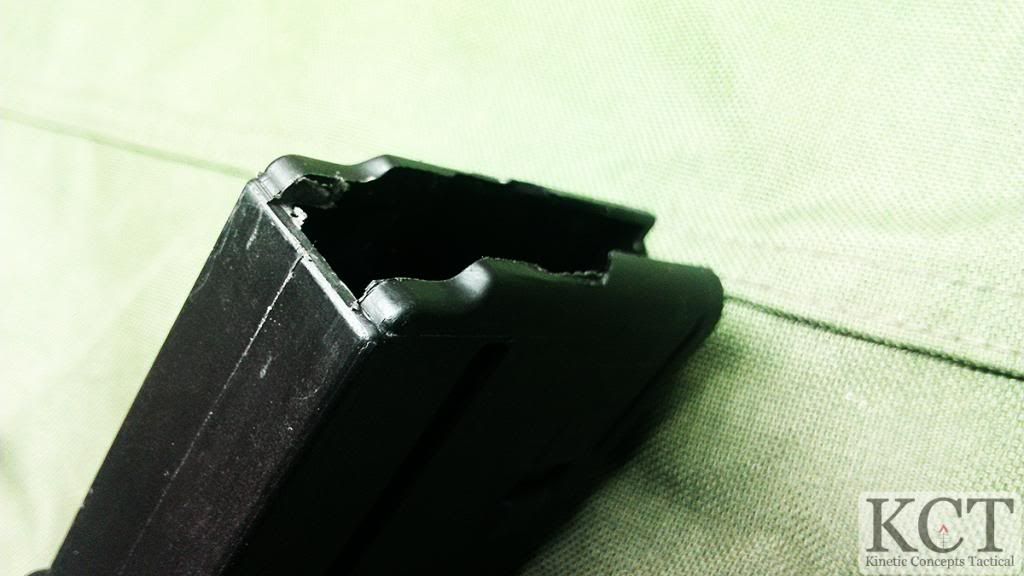 |
| Flash along the mold lines and feed lips |
Feeding
The magazine feeds well in the test magazines we have used. There are no noticeable hangups, failures to feed, or nosedives in the follower that have stopped feeding. To note, however, while we have thousands of rounds logged on a lot of different magazines, the Thermold 30 is a relatively new addition to testing, and most of our samples have seen under 500 rounds each.
Function
The first thing I do when testing out a magazine is see if I can get the follower to nosedive and lock up in the magazine. These magazines are listed as having "pro-tilt followers." You can often get new Thermolds to do this by pressing on the nose of the follower with you index finger. This is also nothing new, nor is it exclusive to Thermolds. GI magazines with green followers are notorious for this, and due to the greater friction produced by the metal body, those GI magazines stick a lot harder than just about anything else.
A Thermold that has seen some use still has a pro-tilt follower, but the slickness of the magazine and follower, especially once used, keeps it from binding up. Feeding is fast and sure, and the bolt unlocks easily over the magazine when the bolt catch is pressed.
Thermolds also have an over-insertion rib that runs around the mid-line of the magazine. This is contoured to the standard AR magwell, but there may be issues with non-standard or aftermarket magwell accessories. In contrast to a GI mag, you should test fit these with your receiver before buying them up wholesale. They'll work in probably 90% of the guns out there, but we've also seen a few funky magwell bevels that could cause an issue.
The top end of the mag has grooves for stripper clips, so if you use those, you're set here. An interesting feature is the shallow incline on the way to the magazine catch. This helps raise the magazine release catch ride up the side of the magazine before dropping into the notch on the magazine for a more secure fit. We have had some magazines with this feature (C-Products 40's) over-insert when slapped home on an open bolt. Thermolds won't due to the over-insertion rib.
Features
Thermolds have a ribbed body that aids in grasping them or pulling them out of pouches. The ribs also make for a decent magwell grip, especially with gloved hands. They do not have an anti-tilt follower, an enhanced baseplate (such as a rubber base, built in pull-tab, etc), or a round counter. The PMAG and L5 AWM both have separate floorplates and baseplates, which makes them easier to take down, but also complicates things, and is an extra part to lose. The Thermold has a one-piece floorplate.
Follower/Spring
Thermold springs are decent quality, and I have had no failures with them yet. The follower is pretty lackluster looking, and does not have the traditional legs of a normal follower. The spring is not truly captured as it is on other designs, such as GI green followers. Instead it is friction fit into a small notch. Newer Thermolds may have a dull red follower for assessing if a rifle is empty or jammed.
Maintenance
Taking down these magazines could not be simpler. Press the tip of a round into the notch at the front of the mag, and the baseplate will pop out. Pull down on the baseplate, and it will come out with the spring and follower. To reassemble, slide in the spring and follower, and insert the baseplate back end first, press down on the lock tab, and press the baseplate into the magazine.
Accessories
Thermold sells a dedicated 30-round mag coupler, also polymer. Beyond that, you can try GI type mag couplers or some of the newer products out there to stick two mags together, but that's pretty much it unless you're throwing a GI dust cover on it. You can shoehorn them into Magpuls, but they often stretch them out to the point that the Magpuls want to slide off of GI mags. So if you throw them on your Thermolds, you'd better be sure you like them on the magazine.
Durability
Thermold 30's are pretty durable. Due to the enhanced exterior ribbing, they exhibit little of the body flex found in the 20 rounders. Even with the baseplate, spring and follower removed, they hardly flex when hand pressure is applied, a big surprise after handling the 20's.
Price
In normal times, Thermolds won out for many shooters with their low pricing. With places like CDNN and Centerfire Systems selling them for $7 a pop and bundling them with a gun, or selling them by the case at a steep discount, a shooter could get a lot of these for a minimal investment. If you can get them for around that price, they are still a great investment, and if you're willing to spend five minutes with a razor, they shouldn't give you a hard time. If you're being asked to pay $10+, you have a lot of other options in that price range.
Magpul PMAG
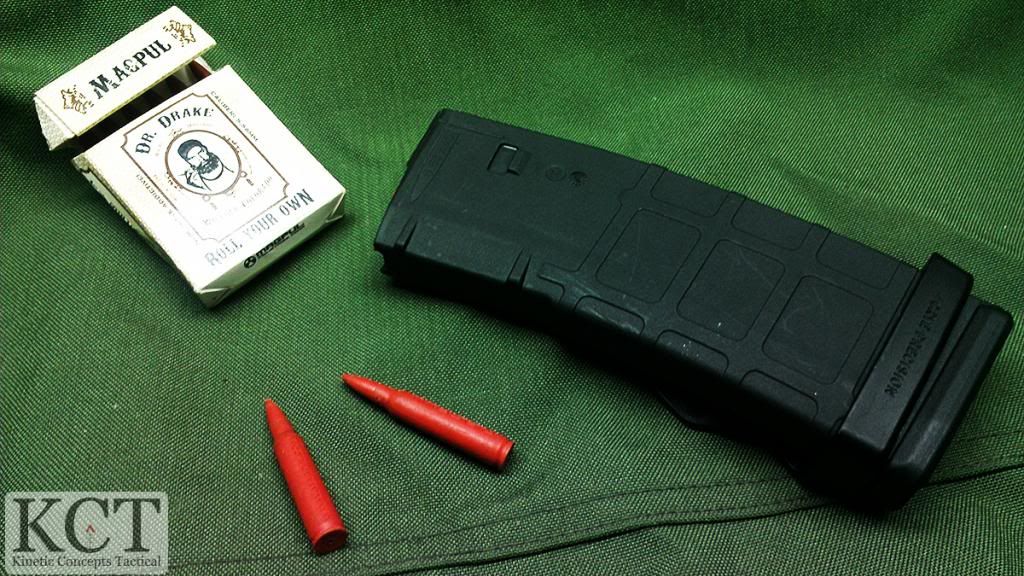 |
| MOE PMAG with Crye Precision Magclip |
Fit
The PMAG was designed to fit nearly any 5.56mm weapon system that uses STANAG magazines. And it lives up to that design requirement extremely well. It has an over-insertion lip as well as tapered ribbing to guide it into the magwell. On the front of the magazine, four flared horizontal nubs keep the width consistent from the front to the back, as the PMAG narrows considerably, consistent with the geometry of the 5.56 round. These nubs prevent the PMAG from wobbling in the magwell. The PMAG does not have a tapered lip to the magazine catch notch.
Feeding
The PMAG feeds reliably thanks to its excellent anti-tilt follower and constant curve geometry. This geometry means that the track that the follower moves on as it feeds is always at the same relative angle no matter where it is in the magazine. Traditional 30 round AR magazines have a curved body that straightens at the top to fit into the magwell. As the follower enters the straight part of the magazine of a GI-type magazine, it has a chance to bind up and stop feeding. The PMAG makes this a non-issue.
 |
| The constant-curve geometry |
The PMAG functions like a dream. The ribbed body and flared baseplate make them easy to draw from a mag pouch. The back rib has a locking tab to attach the Magpul dust/impact cover. The stripper clip indentations are in their proper place as well.
Features
The PMAG features an anti-tilt follower, ribbed body, optional dust cover, and removable floorplate. Their dust cover can be attached as a bumper on the base. This is good for retaining the cover, or serving as protection if the magazine is dropped on a hard surface. To date, I have dropped dozens of PMAGs on hard surfaces without using the dust cover without causing damage. In stock form, PMAGs do not have a rubberized floorplate or built in pull tab.
Follower/Spring
This alone is worth the price of admission. The anti-tilt follower is exactly that. It will not tilt, nosedive, or bind up at all. It is also incredibly massive compared to the other polymer mags we took a look at, and it dwarfs the standard GI green follower as well. The springs are standard fare, stiff but settling quickly once used a bit. Like many magazines, they are sometimes difficult to seat on a closed bolt with a full load, but work in over time.
Maintenance
PMAGs disassemble easily thanks to the large takedown tab in their floorplate. This is easy to depress with the dust cover arm, tip of a round, or other small tool. The spring and follower slide out for cleaning. Unlike a Magpul follower in a GI mag, these followers seem to attract less crud due to the inherent lubricity of the polymer components. The follower is captured via a loop on the bottom facing. The base is also captured by a set of tabs that lock the spring in place but allow it to pop out for maintenance or replacement. Reassembly is accomplished by sliding the spring and follower back into the body of the magazine, pressing the base plate in a few centimeters, and sliding the floorplate over the assembly until it locks into place. The magazine is set up so it can only be assembled one way, eliminating maintenance errors.
Accessories
There are a bunch of accessories out there for PMAGs. If the AR is the Barbie doll for men, then the PMAG is her sporty friend. Mission First Tactical makes a great mag coupler which works for both PMAGs and GI mags. Magpul makes a PMAG specific coupler as well. Other aftermarket couplers are available in different configurations form different manufacturers. Magpul also makes a variety of replacement floorplates such as their Ranger plates which incorporate a rubber pull tab and L-Plates, which are a molded rubber bumper that accept paracord loops. PMAGs also accept Crye Precision MagClips, which are difficult, if not impossible to fit on Lancer or Thermold polymer magazines.
Durability
The PMAG is well documented as a durable mag, with videos of PMAGs being shot and run over by trucks as evidence. Having dropped, thrown, and stepped on PMAGs in our testing, we'd say that the durability claims ring true. We haven't run them over with a truck ourselves yet though. We'll let guys with bigger trucks than ours handle that.
Price
With the release of the Gen 3 PMAG, Gen 2/MOE PMAGs can be found online for a steal, often around $12. This puts them in the price range of a good GI mag (like D&H, C-Products, NHMTG etc). If you can find them for this price, they make a great investment, and a better choice for most applications than other, pricier magazines.
A quick bit of discussion here. Why are we covering both the Lancer L5 and the AWM? Because although they share some similarities, they are very different in many ways. The AWM has superseded the older L5, which according to my discussion with Lancer themselves, is discontinued. So if its old news, why are we talking about it? For one, there many of them on the secondhand market, and there's a lot of confusion about if these stack up to the AWM. And two, the L5's have a lot of great features that make it one of my favorite mags.
Lancer L5
Fit
The Lancer L5 features a slightly wider body near the top compared to the PMAG, as it uses this wider body to stop the mag from wobbling in the magwell. A prominent over insertion rib runs around the middle, and the body is ribbed for additional texture and strength. Due to the over insertion rib, we have had zero issues with over-insertion with the L5. The body and the feed lips are well constructed, with no noticeable seams or flaws to be seen.
Feeding
The L5 has fed flawlessly in our test weapons. The magazines function smoothly, and the follower moves throughout the body without a hitch, even after being thrown in the dirt and snow. Which is a bit surprising considering the follower design.
Function
The L5's function great. The texture on the body makes them easy to extract from pouches, and after a brief break-in period, they insert easily on a closed bolt with a full 30 rounds. The samples we ran for testing were translucent, allowing the operator to assess their ammunition level at a glance. Opposed to the Windowed PMAG, which uses a painted coil on the spring to check the ammo level, these magazines allow the operator to actually see the full stack of rounds until the remaining rounds are up in the receiver. Personally, I like this method better, as the visual indicator is faster and more positive than trying to find the colored coil in a tiny window under stress, but the Magpul design will also give you a positive round count even after the remaining rounds have moved up into the receiver.
Features
The L5 features a clear or opaque body, small steel feed lips molded into the polymer body, as well as a ribbed exterior for positive grip. By far, the L5's best feature is its textured rubber floorplate. This cushions the magazine if it is dropped, as well as providing a soft surface if the operator needs to slap the magazine into the weapon to get it to seat. Having done a tap rack bang drill by smacking my knee into the floorplate of GI mags, I can tell you firsthand that this is a really, really good thing. Although the floorplate is coated in soft rubber, we have not seen any deformation or tearing in a year of use. Like the Thermold, the L5 does not have a baseplate and floorplate, rather it has one integrated plate that serves both purposes.
Follower/Spring
The spring is a standard GI type spring, and does what it's supposed to do without any issues. We have stored these magazines loaded for months with no degradation in the spring. The follower is quite interesting. On the surface, it looks like little more than an updated GI green follower. It functions smoothly within the magazine, but will nosedive sharply when pushed down with a finger. Normally, when considering a magazine for serious use, this is a clear indication that the magazine is junk, and can fail when you need it most.
However, due to the lubricity of the L5's polymer components, the follower immediately pops right back up. In 500 rounds, neither of our test samples has failed to feed or caused any other malfunctions in the weapon. This is one of the few cases where an anti-tilt follower does not seem to be necessary in a 30 round magazine.
Maintenance
Out of the four polymer magazines we've reviewed here, the L5 is the biggest pain to take down. The floorplate is secured to the body by a pair of tabs that lock into the body from the inside of the magazine. The L5 is designed to be taken down with a pair of unfired rounds, and the slots for the tabs are shaped to accommodate the bullets as an improvised tool. Lancer at one time also produced a dedicated takedown tool that can be used instead of the rounds. Once these tabs are depressed, the floorplate is pulled downwards, and it allows the spring and follower to be removed. Reassembly is simpler, place the follower and spring correctly back in, and press the floorplate flush with the body of the magazine, and the tabs will lock back into place.
Accessories
The L5 has the familiar channels for stripper clips. Certain mag couplers may work with them, although the MFT mag coupler was difficult to fit onto the mags, and tended to slide around if sufficient force was applied.
Durability
Like most polymer magazines, there is a bit of flex when the L5 is squeezed, especially around the middle. However, this flexibility is also the greatest advantage of polymer magazines. Unlike metal mags, polymer mags won't permanently warp or distort if struck or stepped on. We have done all that and more, and these things have held up with barely a scratch.
Price
This is a difficult category to be definitive with, as the older L5's have been phased out for the production of the new L5AWM's. We have seen them being sold from private individuals for around $12/each, and at this price point, they represent a good value. There has some confusion as to if the L5 was replaced because it is inferior, or if there were performance issues with the magazine. Other than a bit of controversy surrounding the feed lips susceptibility to DEET, there is nothing that would stop us from recommending these magazines. They have been solid performers, and have a lot of features that are revolutionary in the industry, such as the combination of metal feed lips on a polymer magazine.
Lancer L5 AWM
Fit
The AWM (Advanced Warfighter Magazine) is a redesign of the older L5 magazine. Like their predecessor, the AWM is a hybrid polymer magazine which combines a polymer body with a set of metal feed lips that wraps around the upper portion of the magazine for enhanced durability over the older L5. In bringing together a metal upper portion with a polymer body, the AWM is considerably "busier" than conventional magazines. Lancer avoids any slop in the fitting with tight parts tolerances, and the metal lips and the body of the magazine are as perfectly fit as if they were originally one cohesive unit. The magazine fits tight in the magwell, and locks home with no issues. As with many new magazines, there may be an issue seating the mag with a full 30 rounds, but this quickly disappears once the spring has broken in. Our test sample had no such issues throughout testing.
Feeding
The AWM feeds flawlessly. Rounds feed through with much less resistance than with conventional metal magazines, which was a concern when we first looked at the magazine. One of the main selling points of polymer magazines is the lubricity of the material over metal. With the AWM, even though the rounds are passing through metal feed lips, they feel like they are feeding from polymer feed lips.
Function
The AWM does exactly what it is supposed to do; feed ammunition reliably. Lancer redid the exterior of the mag to incorporate small nubs as well as redesigning the body ribbing to enhance grip and overall strength. The are easy to draw from pouches, and the non-slip grip makes it easy to maintain positive control of the magazine during reloads. The body is a tad wider than the PMAG. So far, there have been no issues with the enlarged upper steel portion deforming or denting, even when the magazine is dropped or thrown.
Features
The redesigned exterior is an improvement over the L5 design, putting more texture where the shooter is gripping it. Like the L5, it comes in a variety of colors, as well as a set of translucent colors. It does not have a rubberized floorplate. Unlike the L5, it incorporates a true anti-tilt follower for reliable feeding. The magazine has the traditional stripper clip guide. The magazine body has a constant curve geometry similar to the PMAG, and the follower moves smoothly along its track.
Follower/Spring
Incorporating a true anti-tilt follower is a huge leap forward for the AWM. Although we have had no feeding issues with the L5's follower, we prefer anti-tilt followers in our AR magazines. The spring is a standard GI-type spring.
 |
| The AWM's follower is a radical departure from standard followers. It is a true anti-tilt follower, though it lacks the traditional "legs" of a normal follower |
Maintenance
The floorplate of the AWM features a push-button release that unlocks the floorplate from the magazine. Simply press the release in with an unfired round or small tool, and slide the floorplate off of the magazine. The spring and follower can be removed as normal, by pulling the spring out through the bottom. The captured follower comes out with it. The magazine can then be cleaned as normal. This is a major redesign of the L5 system, and a lot easier to take down in the field. It is very similar to the PMAG in this regard.
Accessories
Other than the mag couplers and aftermarket dust covers, there aren't a whole lot of accessories available for the AWM. If you are shopping around for a coupler, we recommend you test fit them before purchase, as the texture of the magazine makes for a difficult fit in some systems.
Durability
The enhanced metal feed lips over the smaller tabs of the L5 represent a marked improvement in durability in the AWM. While the AWM has the body flex inherent in all current polymer magazine designs, the upper portion is much more rigid than other polymer magazines. Although the AWM lacks the rubberized floorplate of the L5, it has survived numerous drops on concrete, dirt, gravel, grass, and other surfaces without incident.
Price
The AWM retails for around $12-$16. Translucent AWM's cost a few dollars more. This price puts them solidly in the middle ground of polymer magazines. With the recent improvements made in the AWM model, Lancer has shown that they can turn out a product with an advanced feature set while keeping the price down.
Conclusion
If you are in the market for a quality magazine, you have quite a few options both in polymer and metal formats. Manufacturers are constantly tuning and refining their processes and materials, and products that were pipe dreams a few years ago are now on the store shelves. Although typically metal magazines have a lower price point, polymer magazines are far more resistant to rust and corrosion, making them a great choice for storage or for applications where they may come into contact with moisture, dirt, and other debris, such as an active shooter response rig in the trunk of a car.
In addition to the magazines listed here, there are dozens more on the market from different manufacturers, such as TangoDown, Troy, ProMag, Tapco, CAA and others. As we get more time with these magazines, we will add our findings here.
If there is a magazine you would like to see put through its paces, please let us know, and we will see what we can do. Currently, we are looking at Troy, TangoDown, and the new Gen 3 PMAGs for testing.
Train hard and stay safe.

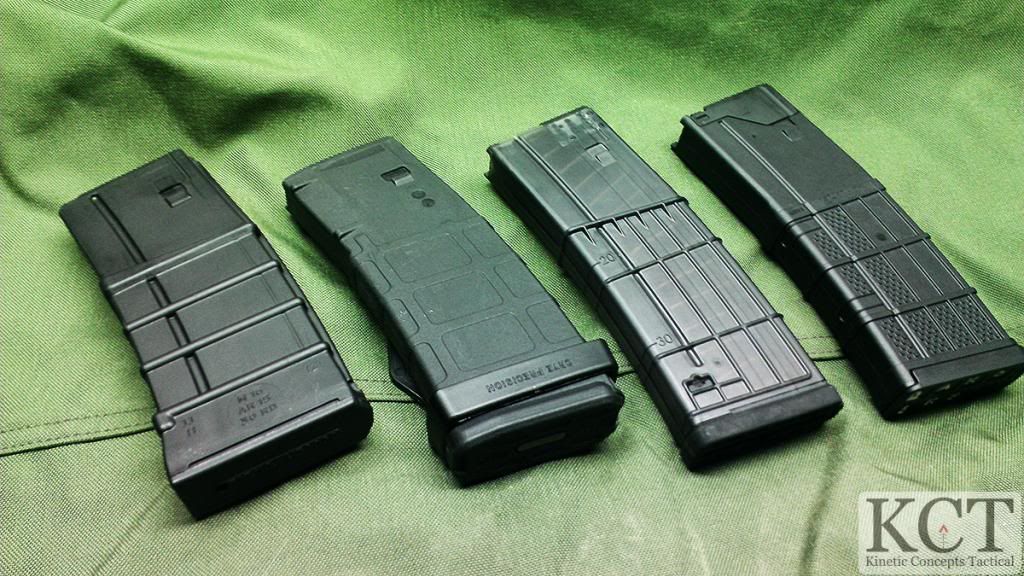
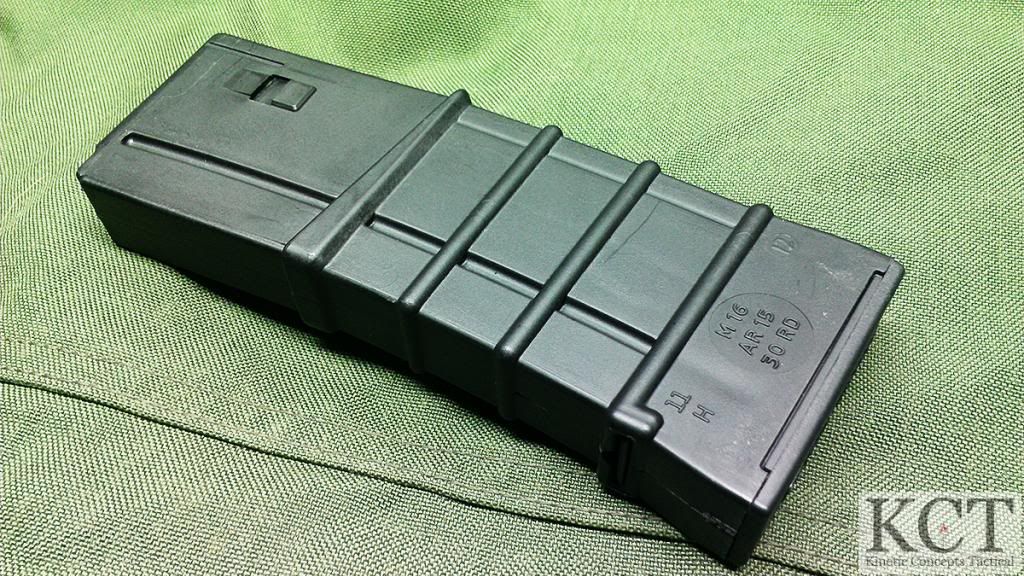
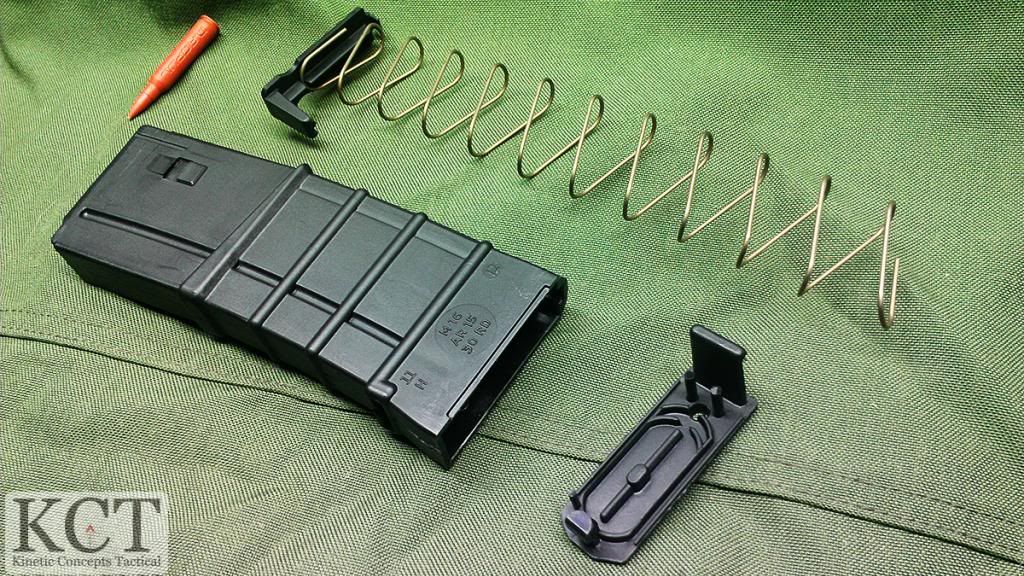
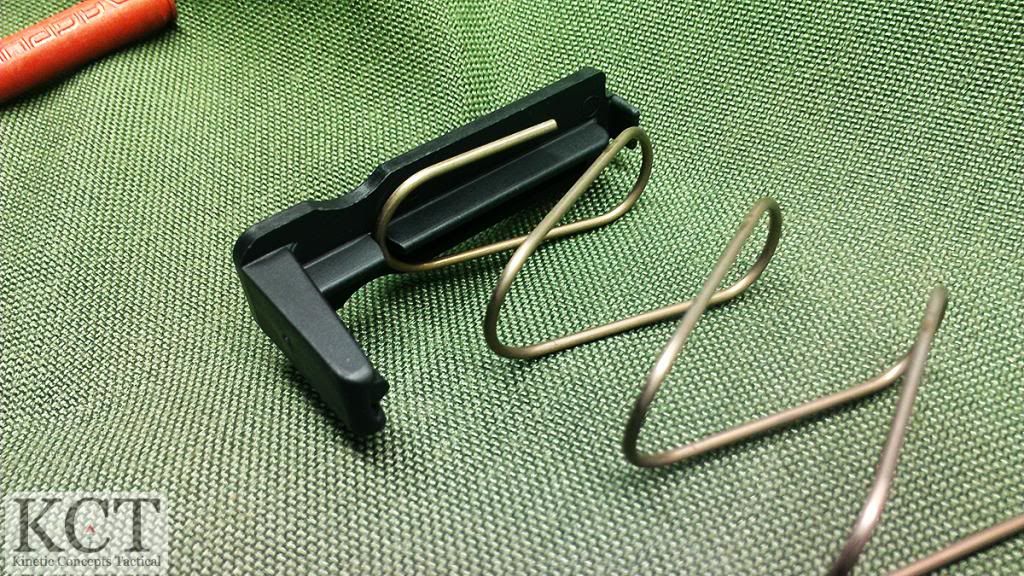
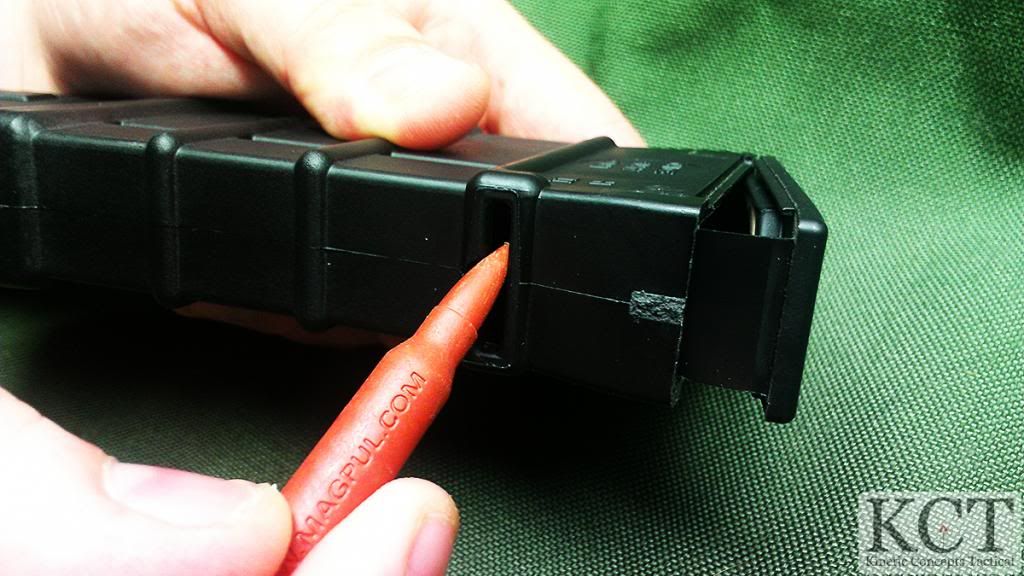
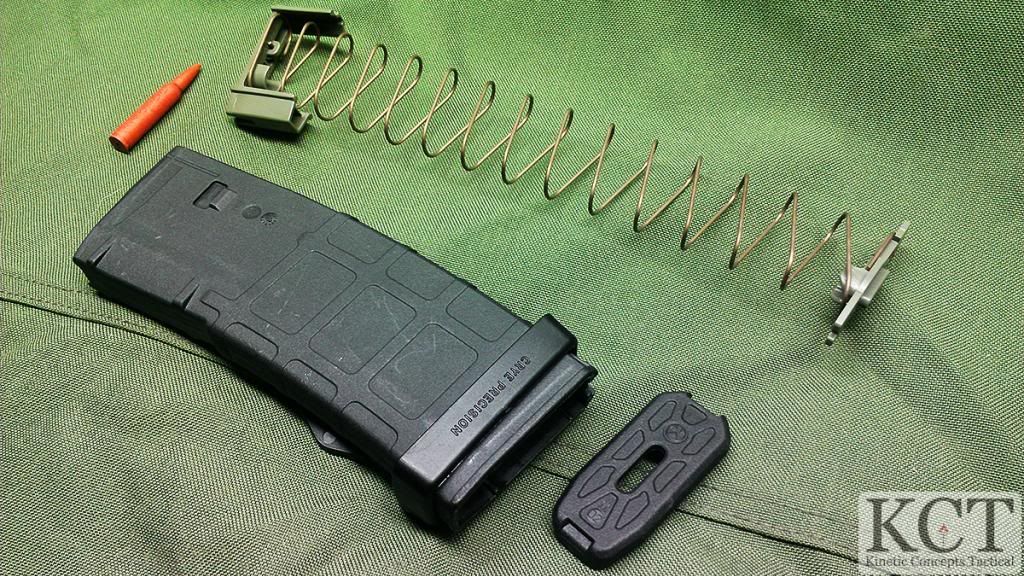
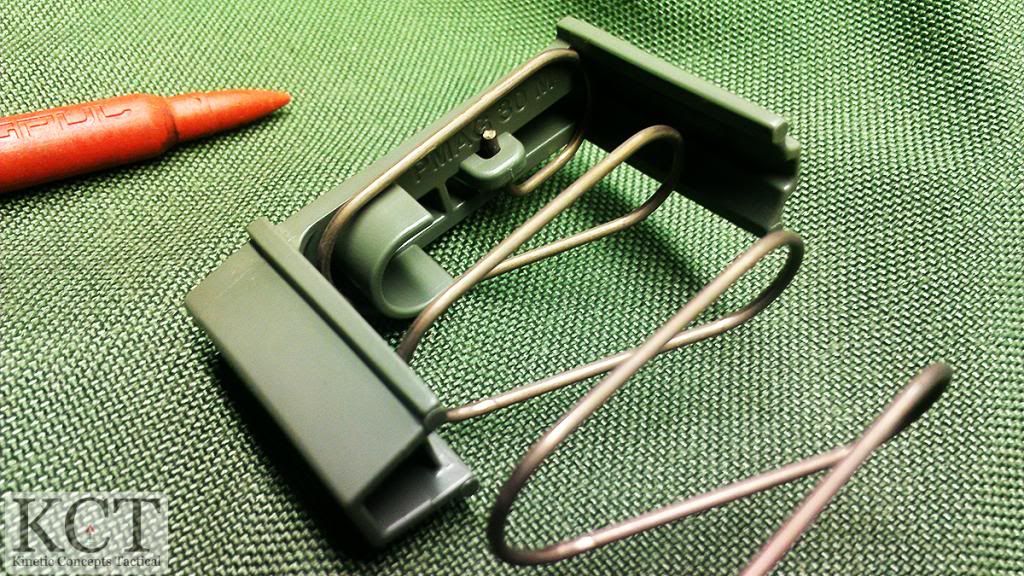
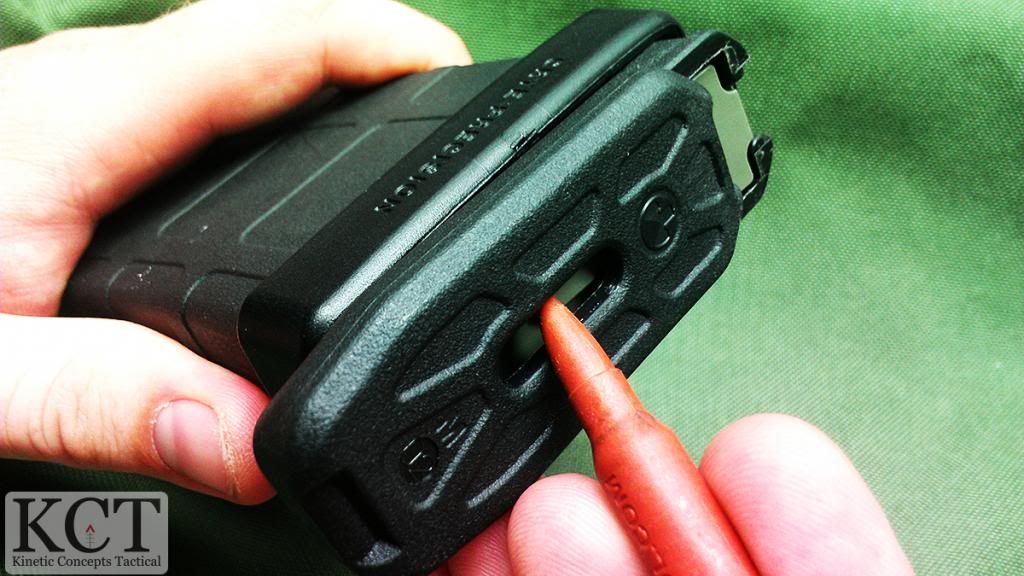

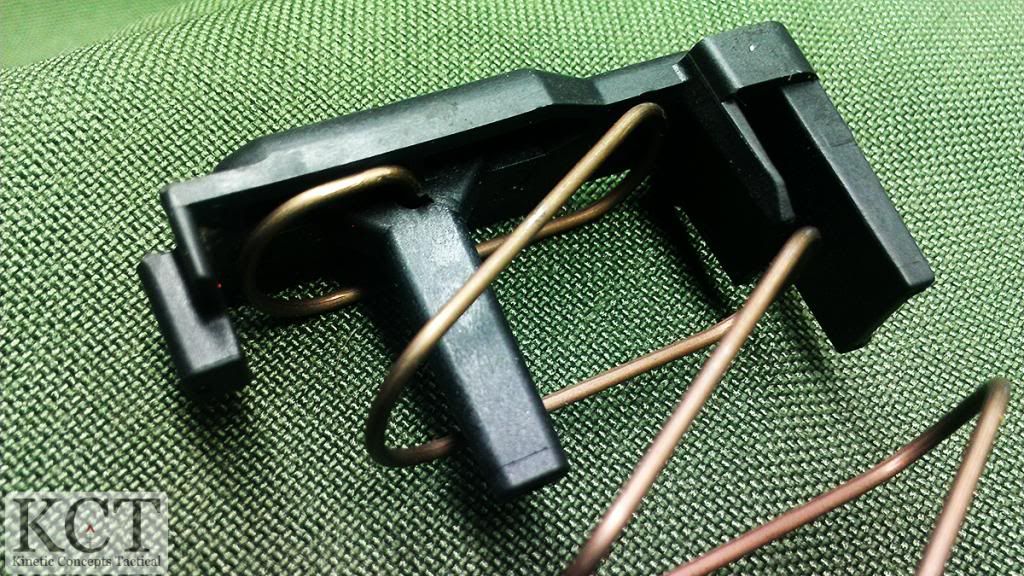
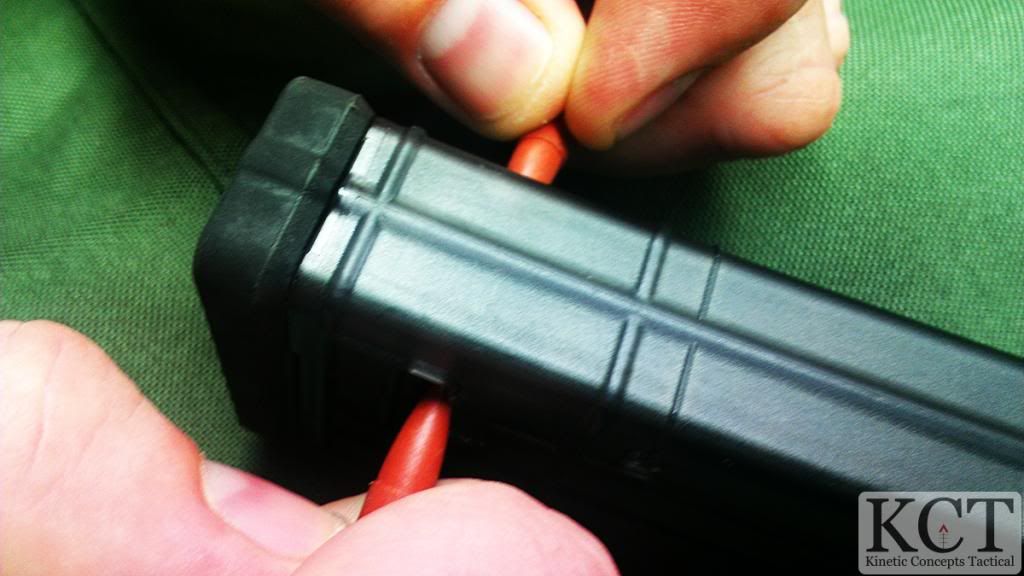

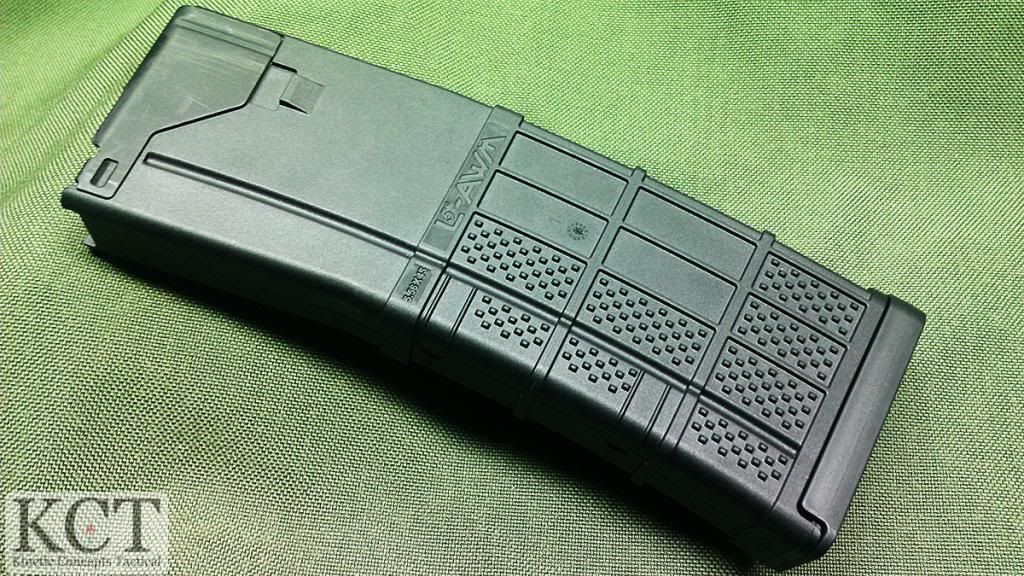

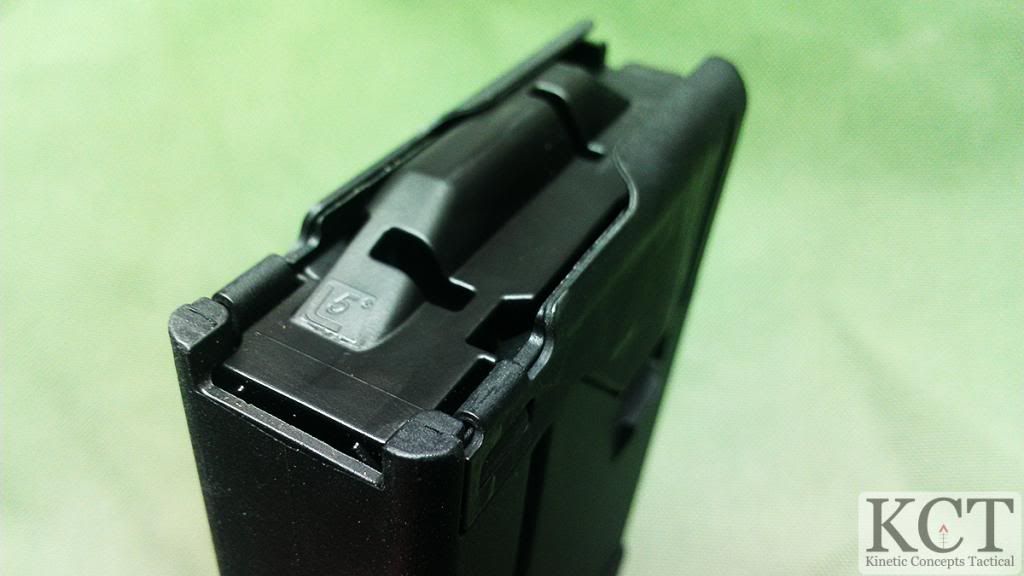
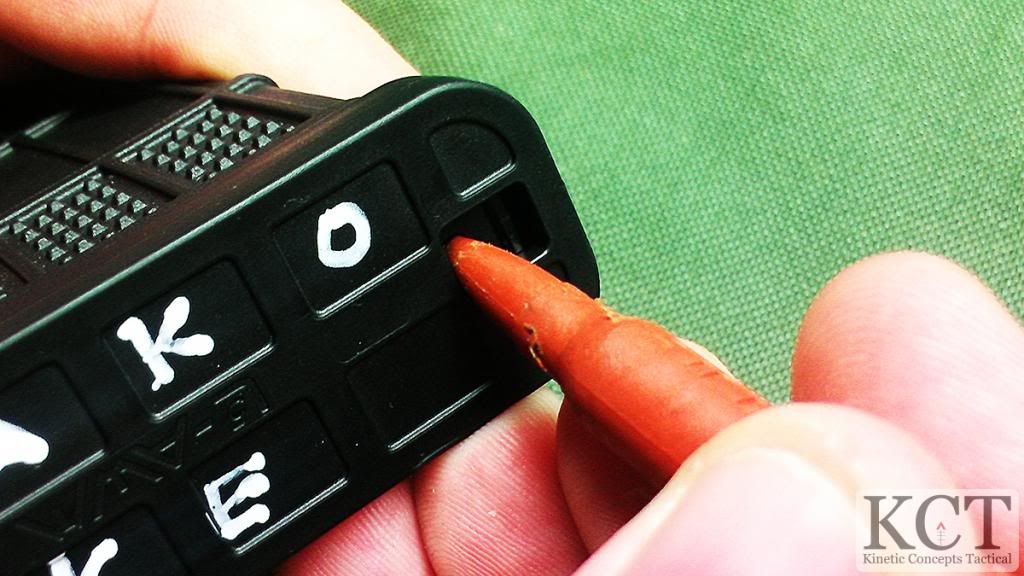
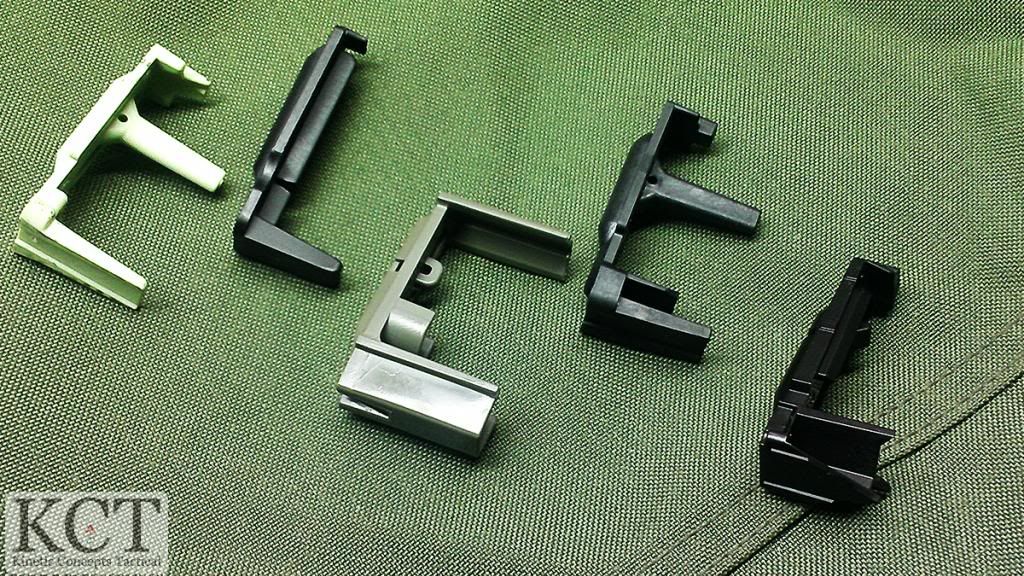
No comments:
Post a Comment